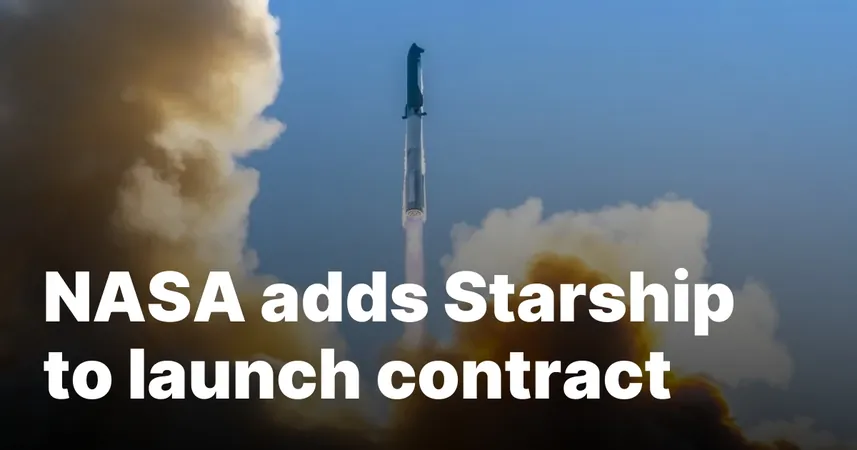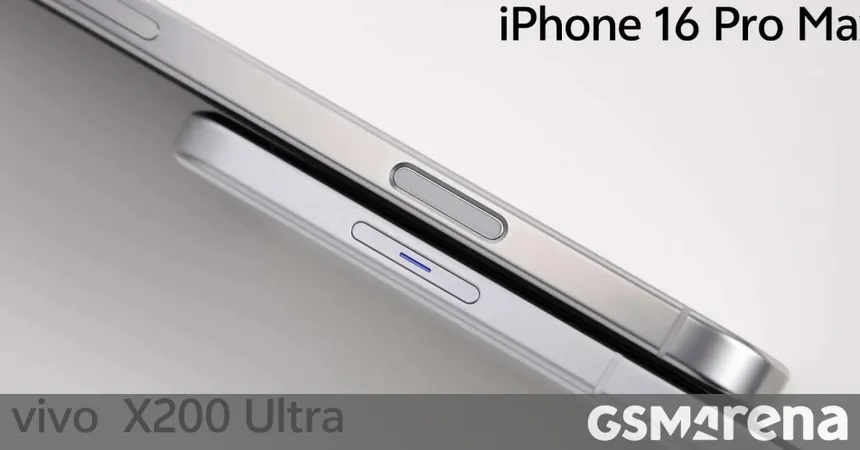
NASA Teams Up with SpaceX: Starship Joins the Launch Revolution!
2025-03-31
Author: Nur
NASA Teams Up with SpaceX: Starship Joins the Launch Revolution!
In an exciting development for space exploration, NASA has officially added SpaceX's ambitious Starship to its NASA Launch Services (NLS) II contract. However, before this cutting-edge spacecraft can take to the sky on major missions, significant preparations are still needed.
On March 28, NASA revealed that Starship is now part of its NLS II, which the agency utilizes to secure launch services for numerous scientific and exploratory missions. Currently, SpaceX's tried-and-true Falcon 9 and Falcon Heavy rockets are already prominent players within this framework, with both rockets having launched multiple missions in recent years, including the successful March 11 liftoff of the SPHEREx astrophysics satellite and the PUNCH science mission—from the same Falcon 9 rocket!
The NLS II contract isn't limited to SpaceX. Other launch vehicles on the roster include Blue Origin's New Glenn, Firefly Aerospace's Alpha, Northrop Grumman's Pegasus XL, Rocket Lab's Electron, and United Launch Alliance's Atlas 5 and Vulcan Centaur.
While the integration of Starship into the NLS II contract is a significant step forward, it’s important to note that this does not mean the vehicle is immediately ready for all NASA missions. NASA categorizes vehicles under NLS II based on their risk levels, which correspond to their launch history and oversight requirements.
Starship currently falls into Category 1, which accounts for "high-risk" vehicles—often those that haven’t yet completed their maiden flight. This category is generally reserved for Class D missions, which are lower-cost initiatives that can afford a higher risk margin.
In contrast, other categories exist for vehicles with varying degrees of operational success. Category 2 covers "medium-risk" vehicles, while Category 3 encompasses "low-risk" vehicles that have successfully executed between 3 and 14 launches. The latter includes missions like the Europa Clipper and the Roman Space Telescope, which demand stricter risk assessments given the critical nature of their objectives.
An intriguing twist came in February when Blue Origin celebrated the success of its New Glenn rocket by attaining Category 1 certification—showcasing the competitive landscape of modern spaceflight.
Despite being included in the NLS II contract, Starship's primary focus for NASA in the immediate future will be connected to its Human Landing System (HLS) program. This initiative involves developing a lunar lander version of Starship for upcoming crewed Artemis missions scheduled for later this decade.
On March 27, SpaceX took another step forward by filing an application with the Federal Communications Commission (FCC) to secure authorization for Starship communications. The company expressed its honor at NASA's choice to collaborate on the Artemis campaign through its innovative launch vehicle and proposed several communications frequencies to support this ambitious national priority.
In more technical details, SpaceX's application outlines operational altitudes for Starship missions to be between 181 and 381 kilometers for low Earth orbit (LEO) operations, alongside plans for a specialized "Final Tanking Orbit" for propellant transfers. The mission plans extend even further, preserving options for low lunar orbit operations—key for future lunar exploration ambitions.
As NASA gears up for its latest era of lunar missions, the integration of Starship into its launch contract signals a thrilling partnership that could shape humanity's future in space exploration. Will this revolutionary vehicle live up to the expectations, and does this herald a new dawn for interplanetary travel? Stay tuned as we follow SpaceX and NASA on this journey beyond the stars!




 Brasil (PT)
Brasil (PT)
 Canada (EN)
Canada (EN)
 Chile (ES)
Chile (ES)
 Česko (CS)
Česko (CS)
 대한민국 (KO)
대한민국 (KO)
 España (ES)
España (ES)
 France (FR)
France (FR)
 Hong Kong (EN)
Hong Kong (EN)
 Italia (IT)
Italia (IT)
 日本 (JA)
日本 (JA)
 Magyarország (HU)
Magyarország (HU)
 Norge (NO)
Norge (NO)
 Polska (PL)
Polska (PL)
 Schweiz (DE)
Schweiz (DE)
 Singapore (EN)
Singapore (EN)
 Sverige (SV)
Sverige (SV)
 Suomi (FI)
Suomi (FI)
 Türkiye (TR)
Türkiye (TR)
 الإمارات العربية المتحدة (AR)
الإمارات العربية المتحدة (AR)